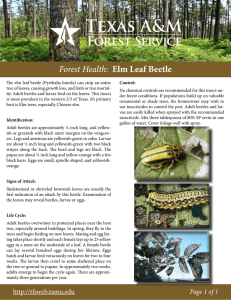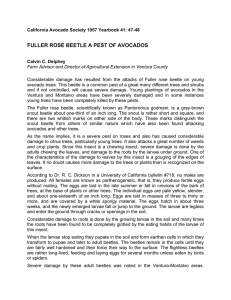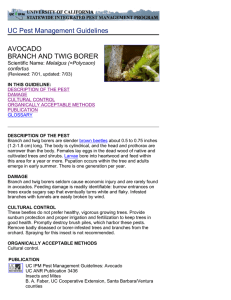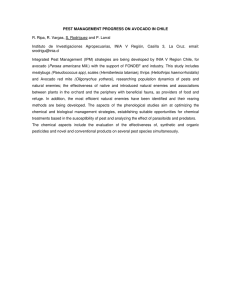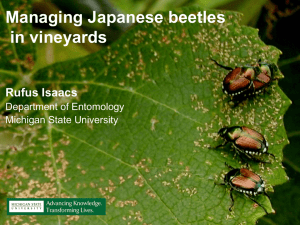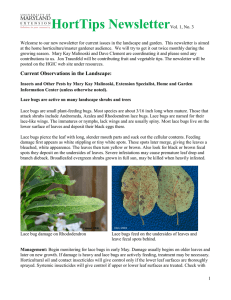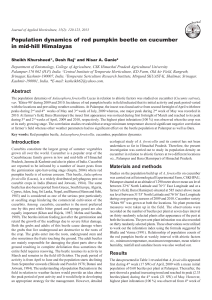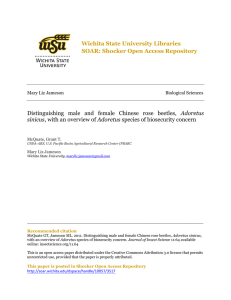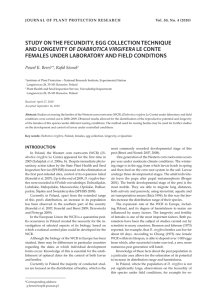UC Pest Management Guidelines AVOCADO FULLER ROSE BEETLE Pantomorus cervinus
advertisement
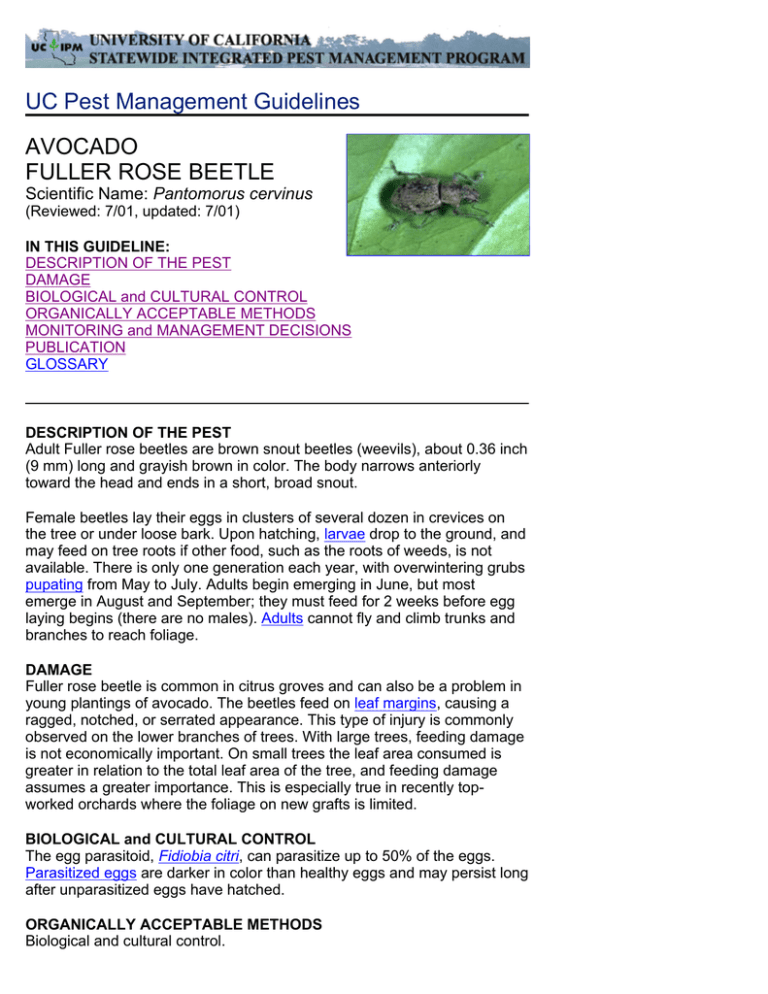
UC Pest Management Guidelines AVOCADO FULLER ROSE BEETLE Scientific Name: Pantomorus cervinus (Reviewed: 7/01, updated: 7/01) IN THIS GUIDELINE: DESCRIPTION OF THE PEST DAMAGE BIOLOGICAL and CULTURAL CONTROL ORGANICALLY ACCEPTABLE METHODS MONITORING and MANAGEMENT DECISIONS PUBLICATION GLOSSARY DESCRIPTION OF THE PEST Adult Fuller rose beetles are brown snout beetles (weevils), about 0.36 inch (9 mm) long and grayish brown in color. The body narrows anteriorly toward the head and ends in a short, broad snout. Female beetles lay their eggs in clusters of several dozen in crevices on the tree or under loose bark. Upon hatching, larvae drop to the ground, and may feed on tree roots if other food, such as the roots of weeds, is not available. There is only one generation each year, with overwintering grubs pupating from May to July. Adults begin emerging in June, but most emerge in August and September; they must feed for 2 weeks before egg laying begins (there are no males). Adults cannot fly and climb trunks and branches to reach foliage. DAMAGE Fuller rose beetle is common in citrus groves and can also be a problem in young plantings of avocado. The beetles feed on leaf margins, causing a ragged, notched, or serrated appearance. This type of injury is commonly observed on the lower branches of trees. With large trees, feeding damage is not economically important. On small trees the leaf area consumed is greater in relation to the total leaf area of the tree, and feeding damage assumes a greater importance. This is especially true in recently topworked orchards where the foliage on new grafts is limited. BIOLOGICAL and CULTURAL CONTROL The egg parasitoid, Fidiobia citri, can parasitize up to 50% of the eggs. Parasitized eggs are darker in color than healthy eggs and may persist long after unparasitized eggs have hatched. ORGANICALLY ACCEPTABLE METHODS Biological and cultural control. MONITORING and MANAGEMENT DECISIONS On young trees, treatment may be warranted when damage is substantial. Starting in June, watch for telltale leaf notching symptoms made by newly emerged adults. Treat at this time to kill adults before they lay eggs. Sticky barriers around young tree trunks can be effective, but must be placed over a layer of tape to protect the tender tree trunks from damage. In the hot sun, sticky materials may run off the tape and contact tender trunk tissue leading to sunburn. TREATMENT Pesticide (commercial name) Amount/Acre P.H.I.+ (days) A. MALATHION 8 4-9 pt 7 COMMENTS: Restricted entry interval: 12 hours. Apply as a foliar spray. Use of this material will disrupt biological control of other pests such as scales, thrips, mites, and whiteflies and is not very effective against Fuller rose beetle. + Preharvest interval. Do not apply within this many days of harvest. PUBLICATION UC IPM Pest Management Guidelines: Avocado UC ANR Publication 3436 Insects and Mites B. A. Faber, UC Cooperative Extension, Santa Barbara/Ventura counties P. A. Phillips, UC IPM Program, UC Cooperative Extension, Ventura Co.
